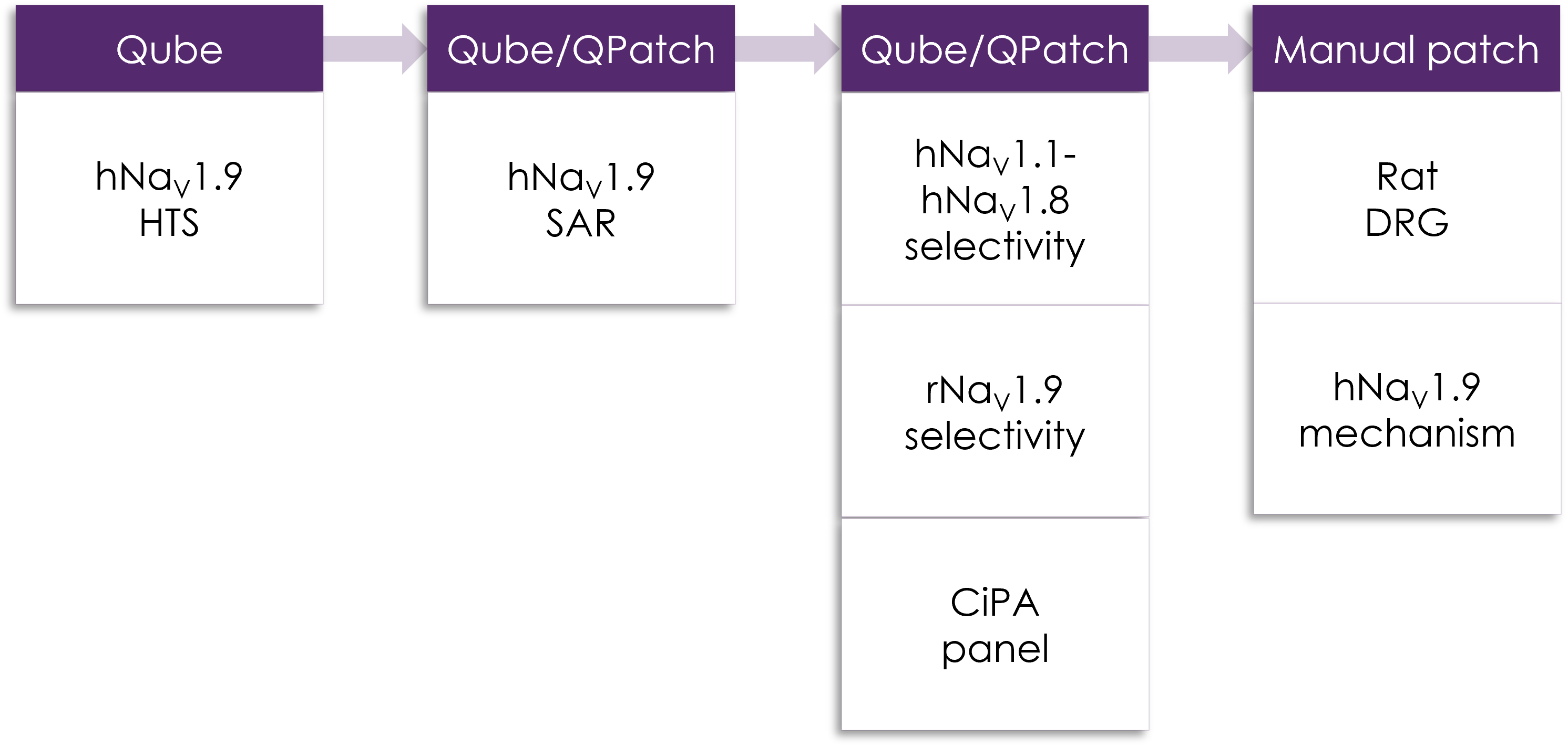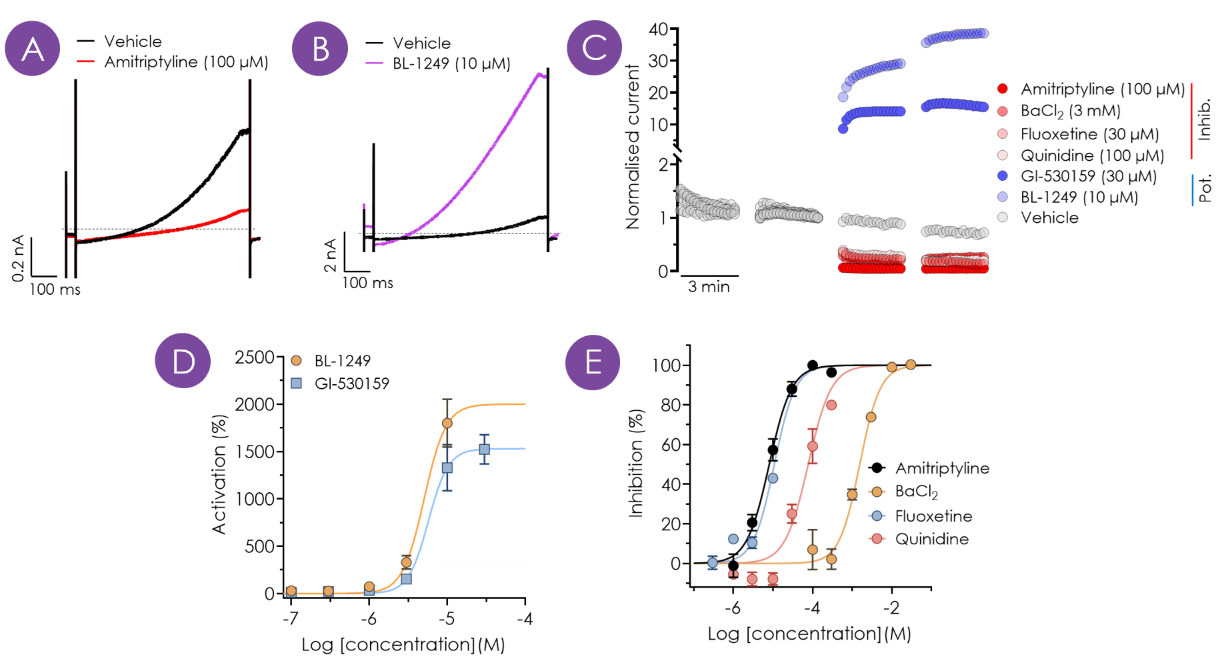The demand for chronic pain treatment is expanding and NaV1.9 has emerged as a high-value therapeutic target. Drug discovery research on NaV1.9 has long been hampered by difficulties in obtaining heterologous expression suitable for screening.
NaV1.9 screening cascade
An extensive NaV1.9 screening cascade has been developed by Metrion, bridging initial high-throughput hit generation of library molecules on our automated patch clamp system to translational characterisation in a native system, of a lead molecule via manual patch clamp.
The cascade starts with a robust hNaV1.9-expressing cell line, generated in-house, capable of reproducible pharmacology and supporting HTS campaigns via automated patch clamp electrophysiology. In addition, we offer a validated rat NaV1.9 expressing cell line for species selectivity screening on our high-throughput automated patch clamp system.
Our rat NaV1.9-expressing cell demonstrates similar current expression and performance to the hNaV1.9 expressing cell line, while sharing comparable pharmacology for standard sodium channel toolkit compounds.

Figure 2. Example of Metrion's NaV1.9 screening cascade.
Long standing expertise in neuroscience drug discovery
Metrion’s longstanding expertise in neuroscience has enabled us to develop a manual patch clamp assay to evaluate endogenous NaV1.9 in rodent dorsal root ganglion neurons.
The synergy of high-quality manual patch clamp analysis with NaV1.9 expressed endogenously within a native neuron, provides an opportunity for mechanistic insight and a translational perspective of compound effects on neuronal firing behaviour.

Figure 3. Activation characteristics of hNaV1.9 using automated patch clamp. (A) Representative traces of hNaV1.9 at a selection of voltages. (B,C) IV plot (B) and GV plot (C) of hNaV1.9 activation. V0.5 activation was estimated to be –48 mV.

Figure 4. Species comparison of NaV1.9 pharmacology using automated patch clamp electrophysiology. (A,B) A test set of NaV inhibitors were tested against human (A) and rat (B) isoforms of NaV1.9. (C) A comparison of IC50s for the compounds that elicited >50 % inhibition. Solid line represents human pIC50 = rat pIC50, dashed lines represent a 3-fold shift, in both directions, in pIC50.




